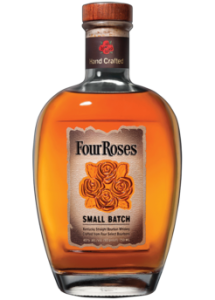Drinking In A Depressed Economy
Despite the worldwide economic crisis, the whiskey industry continues to see growth. While people are spending less at bars, liquor stores are feeling flush. Unfortunately for the consumer, this means that prices are going up as supply comes down. So, you ask, how am I to expand my whiskey experience without going broke? Well, that is the subject of my latest blog, the best values in whisk(e)y.
Face it, if you are on a budget, you are not going to go out and buy a 25 year old Macallan. However, that does not mean that you have to subsist on Rebel Yell and Bell’s Scottish whisky. You can get some bang for your buck.
Of all the types of whisk(e)y, bourbon is going to give you the best value. If you live in Kentucky, or a state with low interstate and alcohol tariffs, then this is doubly true for you. Finding a decent bourbon for under $25 should not be difficult, regardless of where you live. To my mind, the standard issue Buffalo Trace or the yellow label Four Roses bourbon is the best you can get at this price point. For a few dollars more, you can upgrade to the Four Roses Small Batch or Elmer T. Lee.
If you can handle it, rye whiskey is also a great value. Russell’s Reserve 6yo is quite affordable, but my recommendation is the Rittenhouse Bottled in Bond 100 proof. Russell’s Reserve is still a little harsh for my taste.
You will not see us write about Canadian whisky very often, but one of the best deals in whisk(e)y is Forty Creek Barrel Select. In my experience, you typically need to spend a lot of money to get a Canadian whisky suitable for anything other than a cocktail. Forty Creek is the first affordable (around $25) Canadian whisky that has a great taste and a full bodied profile that stands up to other whiskeys (stay tuned to Whisk(e)y Apostle for a formal review of 40 Creek).
For other whiskeys, we are going to have to go up a bit to get a decent dram, but you still don’t have to break the bank.
If you are looking for a deal with Irish whiskey, I will once again suggest Redbreast. Redbreast is one of a handful of pure pot stilled whiskeys from Ireland. You will never find another whiskey this complex at this price (around $45). The nose and palate are both filled with sweetness and botanicals. If you don’t have a bottle of this on your shelf, shame on you. You can also pick up some Irish blends (Black Bush is my favorite). Stock standard Jameson or Bushmill’s are also great values, but will likely not take you on the sensuous journey that you should expect from your dram.
When it comes to Scottish whisky, most distilleries offer a 10yo or 12yo option for a reasonable price. Chance are, if you like a more expensive version, you will like the economy version. Just don’t expect the same nuance. You can also get a deal on older whiskies by purchasing independent bottlings. However, unless you can taste before you buy or can find a review you trust, you can really get burned on independent bottles that do not retain any of the characteristics of the distillery from which they originated.
Blended Scotches are always an option, but most good blends cost as much as single malts. Johnnie Walker and Black Bottle are trusted brands. If you are going to go with Johnnie Walker, you should be able to find the Green label for less that $50, the Black for less than $40, and the Red for less than $30.
If you want to get the most of your whisk(e)y selections, find some friends who are also into whiskey and coordinate your purchases. Then get together and have a tasting. After all, what use is a good dram if you can’t share?
*Prices are estimated. Actual prices in your area could vary greatly.*


